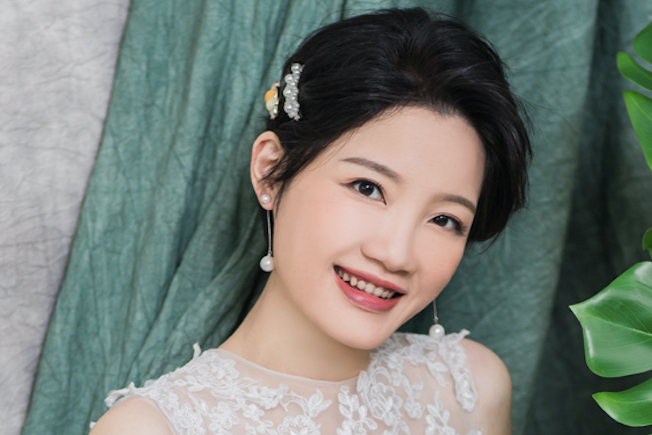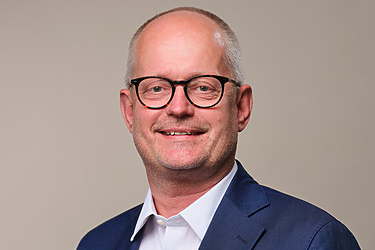
Tracey Hsu – Sales Manager of Camangi Corporation
Our recent interaction with Ms. Tracey Hsu., Sales Manager of Camangi Corporation, talks about the inspiration behind their innovative UMORFIL® Bionic Fiber technology and its unique features.[Interview] Camangi Corporation creates functional fibers from fish scales
2021-10-27 05:31:00 – TaiwanCamangi Corporation Ltd. was founded in 2002. The company focuses on both the IT business as well as textile business. The company launched UMORFIL® bionic fiber technology in 2012.
UMORFIL® is a new technology for amino acid bionic fiber which is developed by upcycling fish scales. This Patented Technology is a supramolecular tech that integrates ocean peptide amino acid with other textile materials like viscose or filament ingredients which results in bionic functional fiber series. The fiber not only provides a comfortable hand feel but also has a skin-friendly texture.
Our recent interaction with Ms. Tracey Hsu., Sales Manager of Camangi Corporation, talks about the inspiration behind their innovative UMORFIL® Bionic Fiber technology and its unique features.
YnFx: What inspired the creation of UMORFIL® Bionic Fiber technology?
Tracey: Our Founder Dr. James Hou is a well-known expert from the Taiwanese textile industry. He desires to change the textile industry from a linear economy to a circular economy and be eco-friendlier for our earth. Based on his years' experience in the textile industry and professional biology background, he created UMORFIL® Technology in 2012 that valued up the food waste – aquaculture fish scale into textile ingredients and successfully innovated the skin-friendly UMORFIL® Bionic Fiber series.
YnFx: What are the various raw materials that go into manufacturing UMORFIL® fiber and how do you source them?
Tracey: The FAO data shows the fishing volume is increasing annually and had reached 170 million tons until 2018, including 82 million tons from the aquaculture fisheries. We can imagine there’s a huge amount of food waste from the fish products if factories bury them in the land, it will cause soil acidification seriously, or if they burn them it will also cause air pollution. Therefore, if fish scales can be upcycled and value up to create the new products, it will be an important milestone in the development of a circular economy, when we upcycle the fish scales and extract amino acid to create the UMORFIL® Bionic Fiber series with multiple natural features, we can help to reduce the food waste and pollution issue on earth.
YnFx: What sustainable measures has the company taken in its production process?
Tracey: For textile industries, adopting the UMORFIL® Bionic Fiber series can help to reduce the waste in the world, when we produce 1 Kg bionic viscose named UMORFIL® Beauty Fiber® might recycle almost 800-gram fish scales to extract enough amino acid, for producing 1 Kg bionic nylon UMORFIL® N6U® and bionic polyester UMORFIL® T might recycle almost 500-gram fish scales to extract enough amino acid, which can protect marine ecology via reducing the food waste issue as well as overfishing issue, avoid soil acidification and provide premium value for textile products.
YnFx: What are the unique features of fibers created from UMORFIL® technology?
Tracey: UMORFIL® name originates from the combination of Latin “Umor” and French “Fil”. Umor means moisture and fil means yarn, the UMORFIL® Bionic Fiber series just like wool and silk have amino acids naturally that have some special properties, like better hand-feeling, higher moisture regain, natural odor control and UV protection, etc. Also, all of UMORFIL® Bionic Fiber series had passed the medical level of skin sensitization and irritation testing (ISO 10993). UMORFIL® has been used in all ranges of textile products from denim, shirts, innerwear, home textile, wadding, and shoe materials.
When we wear a textile product made by UMORFIL® Bionic Fiber series, the permanent natural features provide our skin a better environment to keep our skin stay in a healthier and better condition, also can prevent environmental pollution without using too many chemicals and detergents with the natural features, which are easier for the industry as well as consumer to take care.
YnFx: What are the various sustainable textile products available in the UMORFIL® collection?
Tracey: UMORFIL® Technology using supramolecular technology to integrate collagen peptide amino acid which upcycled from food waste – aquaculture fish scale (circular economy concept) with cellulose fiber (UMORFIL® Beauty Fiber®), polyester (UMORFIL® T) and nylon (UMORFIL® N6U®), create the bionic functional fiber series:
UMORFIL® Beauty Fiber® (Bionic Viscose)
UMORFIL® Beauty Fiber® was created to pursue innovation in textile products that are skin-friendly and good for the environment. It can be blended with cotton, linen, lyocell, wool, and synthetic fibers to provide different textures for different applications.
UMORFIL® N6U® (Bionic Nylon)
UMORFIL® N6U® is a new type of nylon that has better hand-feeling with a deep dyeable feature, higher moisture regain, natural cooling effect, and anti-UV function, providing us a skin-friendly and better protection textile material.
UMORFIL® T (Bionic Polyester)
The manufacturing process changes the molecular structure of poly, which makes UMORFIL® T with champagne gold color naturally, has bionic features and soft-touch, also with better elongation. The industry can design the fabric with natural champagne gold color, without the dyeing process it can reduce the usage of dyestuff and the effluent issue.
YnFx: Being created from fish scales, what were the challenges or limitations faced while developing UMORFIL® technology?
Tracey: The most important and the hardest thing is letting customers believe in you. As the textile supply chain is a long journey to the final customer, the textile industry, consists of multistage stages from fiber production to the final garment product. We created an ingredient brand UMORFIL® for the UMORFIL® Bionic Fiber series, which makes the textile supply chain and brand customers see it as a premium new material that would like to test, develop and adopt, we work very hard for the UMORFIL® brand value since 2012. As there are more and more different supply chain partners in the world, they could also promote their products like yarn, fabric, and design with their customers. We thank all the supply chain partners, thank you for your support of UMORFIL®, we appreciate your belief in UMORFIL® and invest your time in developments as well as marketing promotions, even some of you during the trial period, we do feel your sincere support.
YnFx: What are the future plans of the company?
Tracey: The circular economy concept has been considered as a solution for sustainable development, which is a shifting trend due to resource limitations. As a matter of fact, many industries have developed products by reuse, re-manufacturing, or recycling in the past decades. Our Founder Dr. James Hou will keep innovating new materials which extract the peptide amino acid ingredient from aquaculture fishery waste - fish scale and become the bionic textile material series, which can help the textile industry from a linear economy to circular economy and be eco-friendlier for our earth that provides the blue ocean market for the textile industry.
Market Intelligence
Ask for free sample Report

experience
Customer Base
dedicated team
Countries Served Worldwide






